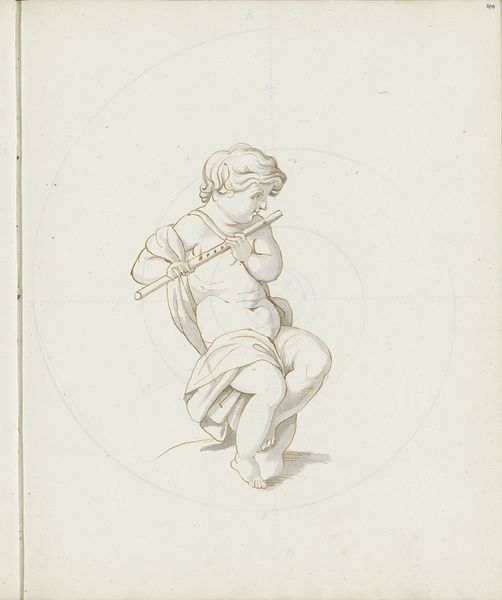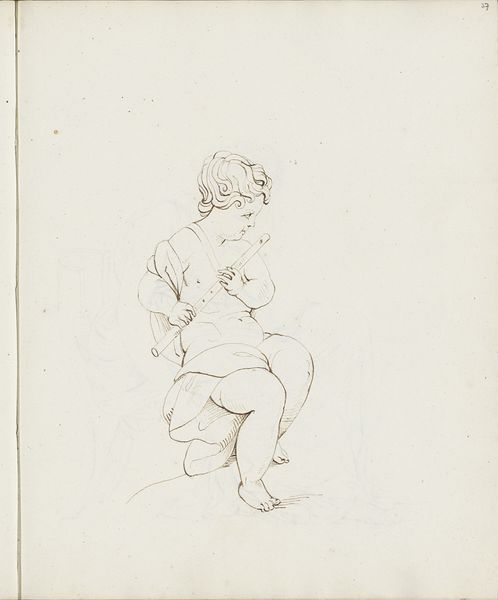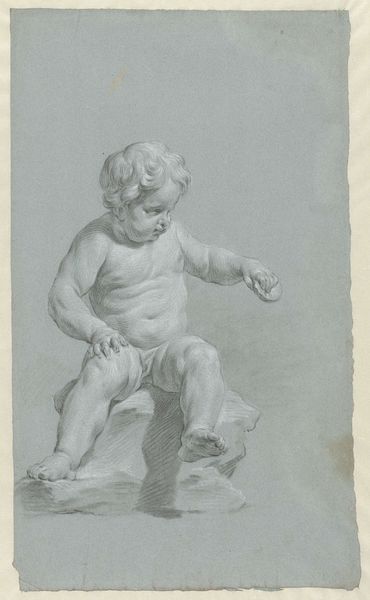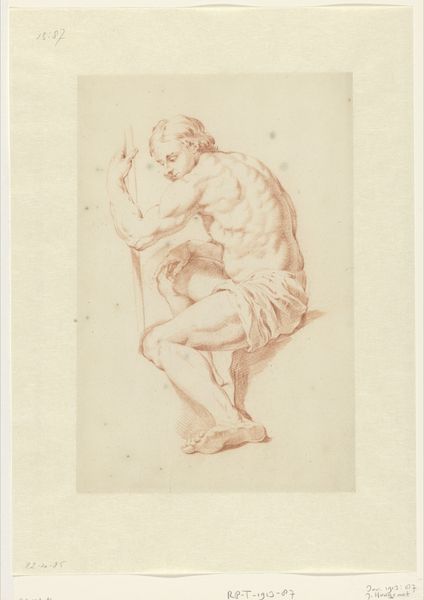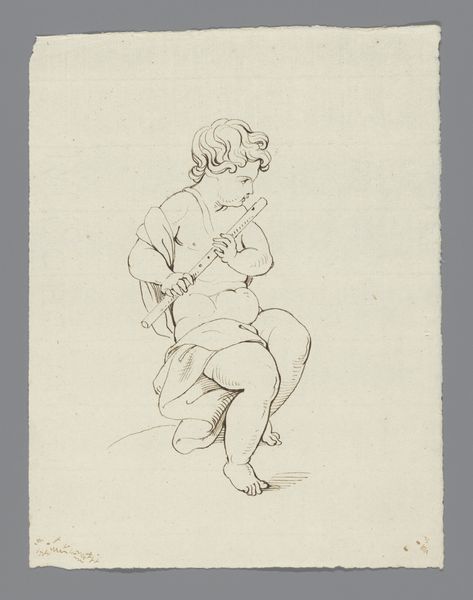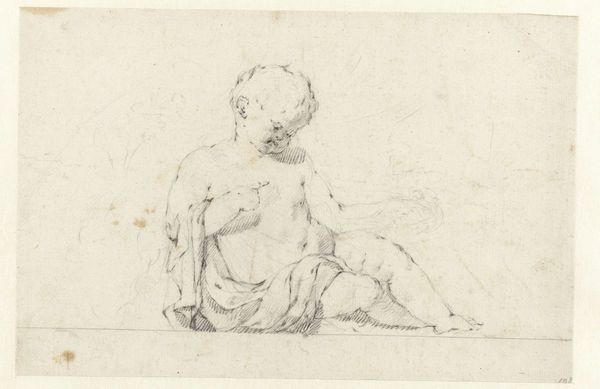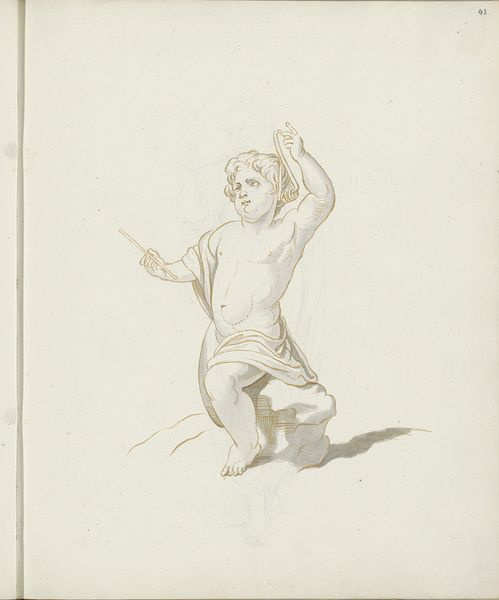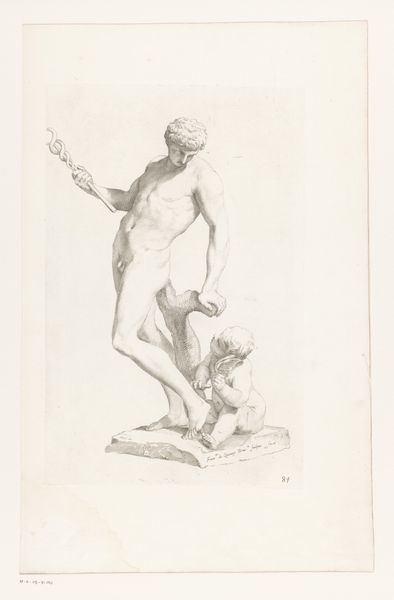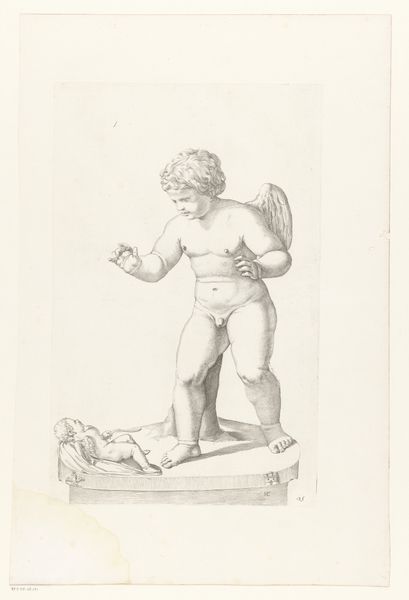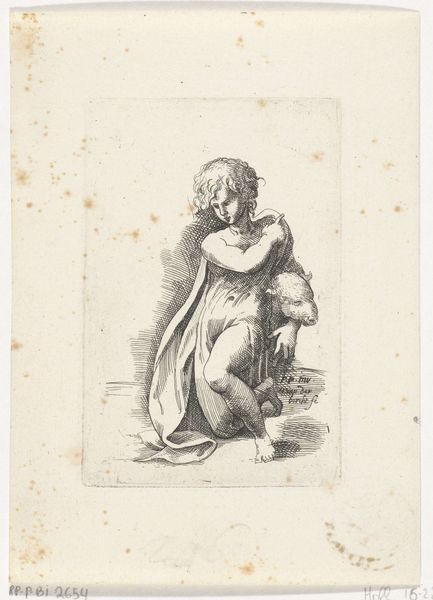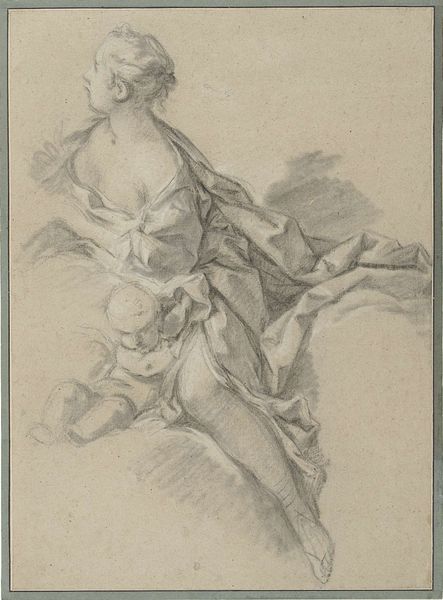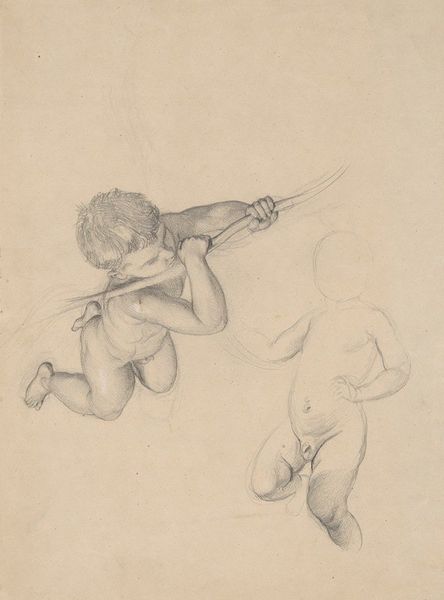
drawing, pencil
#
drawing
#
pencil sketch
#
classical-realism
#
figuration
#
11_renaissance
#
pencil
#
academic-art
Copyright: Rijks Museum: Open Domain
Editor: Here we have "Op een fluit spelende putto," or "Putto Playing a Flute," a pencil drawing created sometime between 1816 and 1852. It’s quite simple, just a cherubic figure with a flute. What can you tell me about this work, looking at it as an art historian? Curator: Let us look past the mere subject and instead observe the formal qualities. Notice how the artist renders the figure. The drawing utilizes a delicate line, a fine hatchwork. Note the careful attention given to volume, rendered via subtle gradations of tone, but somewhat flattening form. Editor: So, less about the putto himself, and more about how the drawing functions? Curator: Precisely. Observe the composition: the figure is centered, balanced. Its contours echo one another – the curve of the arm mirrored in the leg. The light, while soft, shapes and defines. Does that choice reinforce a particular symbolic or philosophical element from you point of view? Editor: Hmmm, perhaps the purity of line connects to the neo-classical focus on rationality? Curator: An astute observation. By attending to form, we may unravel the ideology embedded within the aesthetic. Note, too, the way that, by depicting it as sculpture, the artwork calls into question drawing’s capacity as a ‘true’ image versus sculpture’s objective truth to form. What implications emerge through such consideration of its aesthetic and ontological claims? Editor: It reframes how I think about value judgments and materiality. I thought it was a simple sketch, but now, thanks to looking closely at its structural parts, it seems more complex and almost unsettling in what it implies. Curator: Indeed. Shifting our gaze, we gain newfound perspective.
Comments
No comments
Be the first to comment and join the conversation on the ultimate creative platform.
